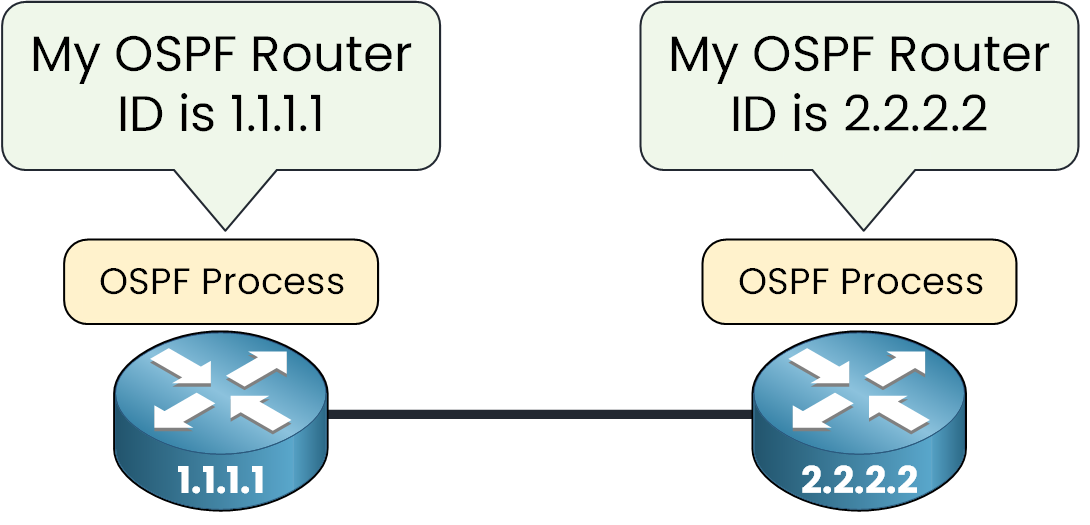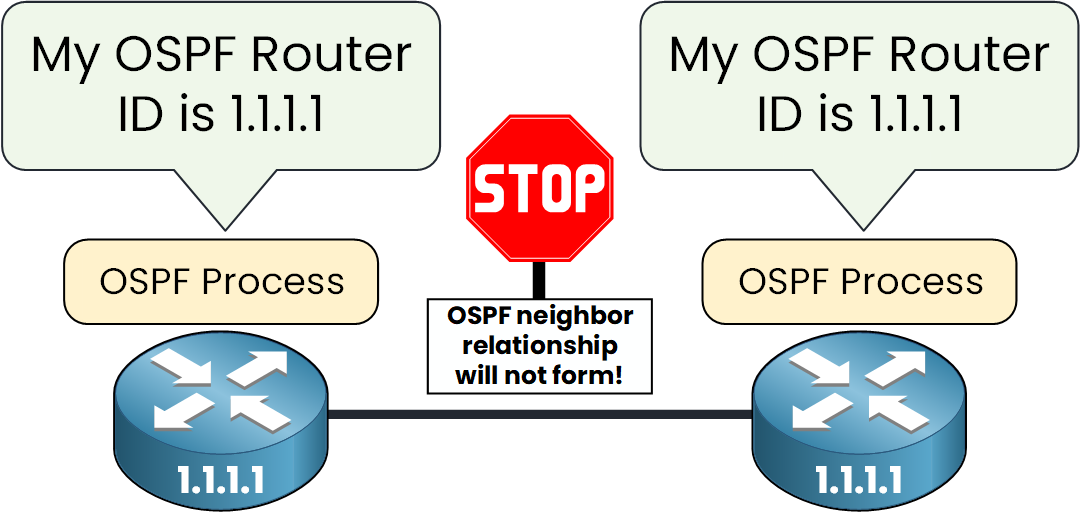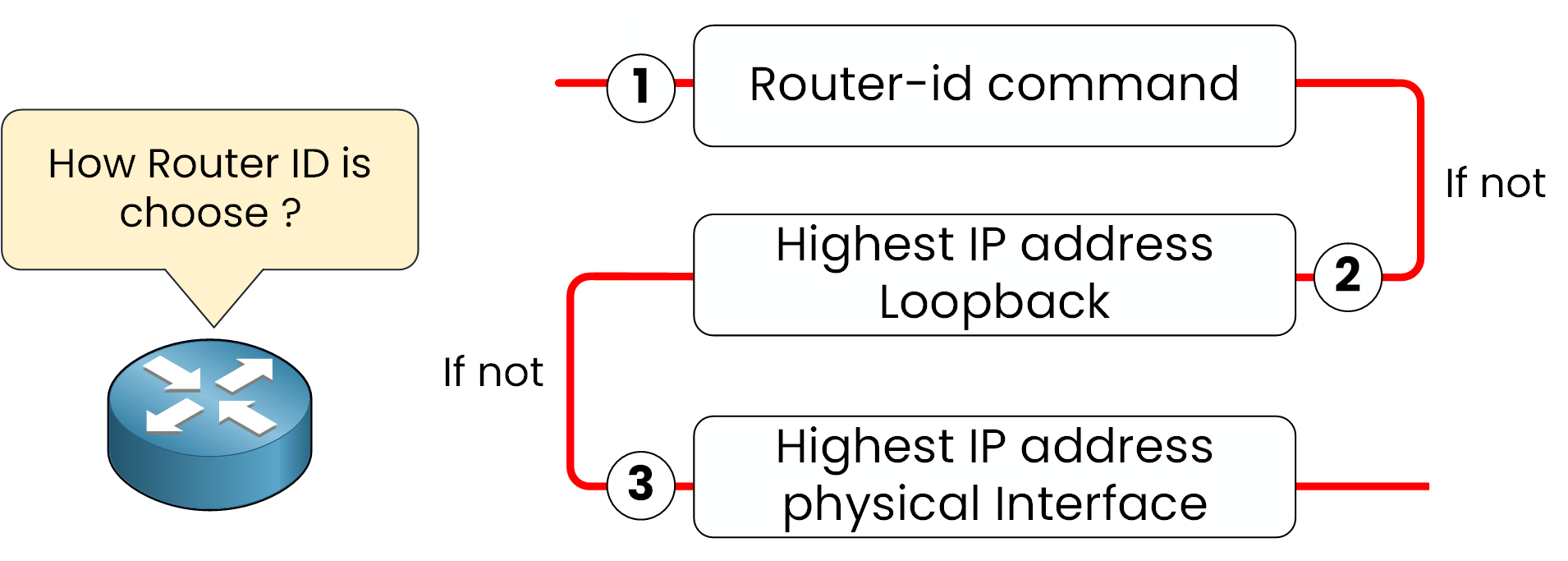The OSPF Router ID (RID) is a 32-bit value that provides a unique identification for each router in an OSPF network.

Figure 1 – OSPF Router ID
It’s displayed in IPv4 dotted-decimal format (for example, 1.1.1.1) and is used internally by OSPF.
The Router ID serves two key purposes in OSPF:
Identify routers when using Hello packets.
Indicate the origin of LSAs in the Link-State Database (LSDB).
This identifier allows OSPF routers to recognize each other and correctly build the network topology during SPF calculations.

Figure 2 – Duplicate OSPF Router ID
If two routers share the same Router ID, OSPF will detect the conflict and prevent them from forming a neighbor adjacency.
To ensure stability, each router must have a unique Router ID across the OSPF domain.
In larger environments, network engineers often use a structured naming plan (for example,1.1.1.1for R1,2.2.2.2for R2) to simplify management and troubleshooting.Answer the question below
When the OSPF process starts, the router automatically determines its Router ID (RID) following a specific order of priority.

Figure 3 – OSPF Router ID Selection Logic
Here’s the exact selection process:
Step 1 – If the
router-idcommand is configured manually, that value is used immediately.Step 2 – If not, the highest IP address on any active loopback interface is chosen.
Step 3 – If no loopback is available, the highest IP address on any active physical interface is used.
Only interfaces that are up/up are considered in this process.
If all interfaces are down, OSPF cannot start until one becomes active.Why This Order?
Loopback interfaces are preferred because they are logical interfaces that stay up unless you manually shut them down, making them stable and reliable for Router ID selection.
Physical interfaces, however, can go down due to link or configuration issues, which may cause OSPF to reselect a new Router ID and reset adjacencies.To prevent this, engineers typically use a loopback or a manual Router ID to keep the value consistent and stable.
Answer the question below
Which interface type is preferred if no manual Router ID is configured?
Let’s take a simple example to see how OSPF selects the Router ID in practice.
Imagine a router named R1 with several interfaces already configured.40 % Complete: you’re making great progress
Unlock the rest of this lesson
If you’d like to continue your CCNA journey, simply create your free account.
Access all CCNA lessons
Practice with hands-on labs
Train with Practice exams and Quizzes
Progress tracking in your dashboard
Made by network engineers - CCNP certified
learners globally
OSPF Router ID
The OSPF Router ID is a unique identifier that every router needs to participate in an OSPF network. In this lesson, you’ll learn the exact rules for its selection, why duplicate IDs cause issues, and why manual configuration is considered best practice.